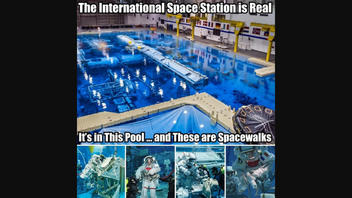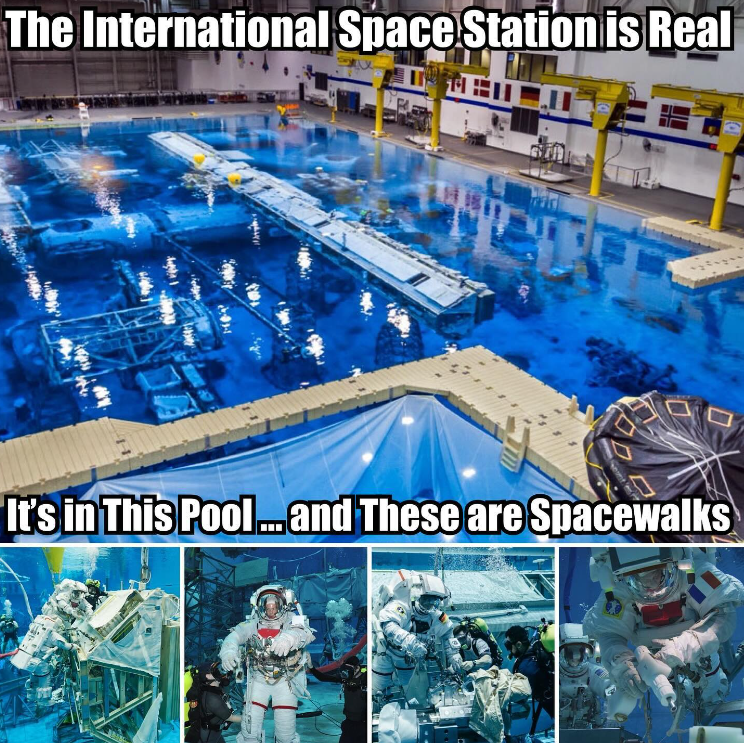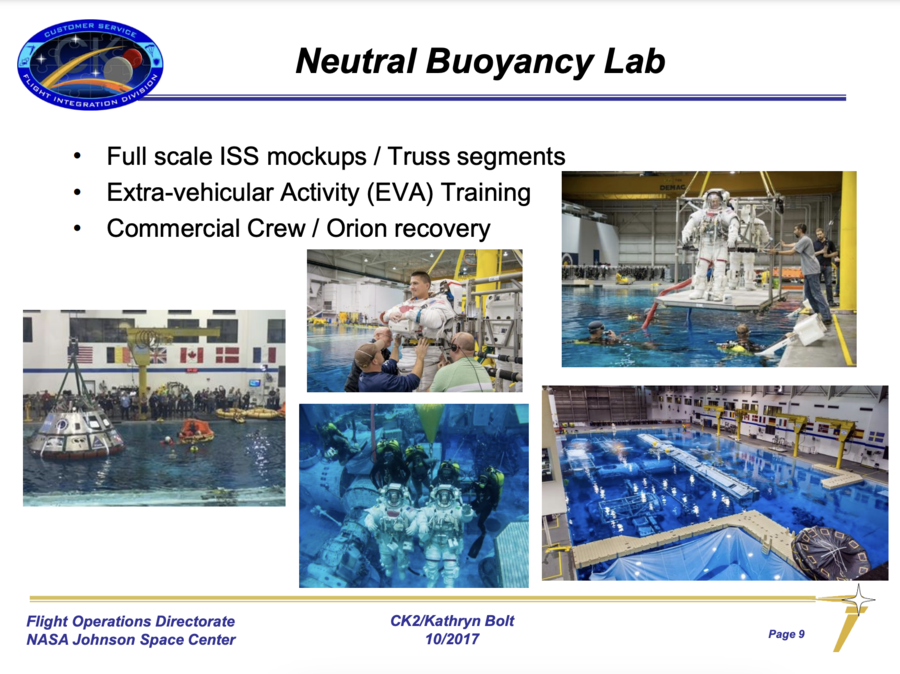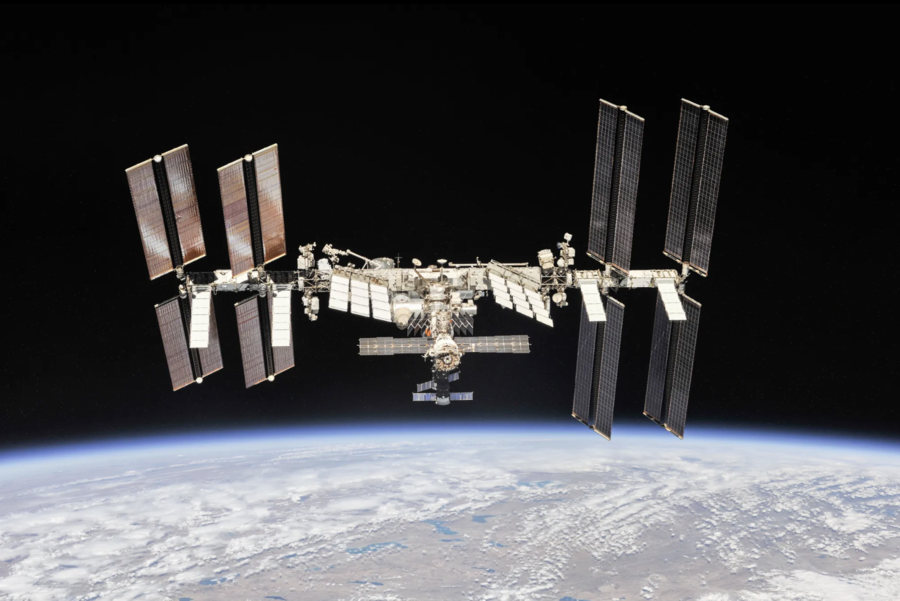
Is the International Space Station (ISS) in a swimming pool? No, that's not true: The ISS is in space, orbiting Earth, contrary to images on social media referring to the ISS as "International Swimming Station". The images show NASA's Neutral Buoyancy Laboratory with a full-size mock-up of the space station. It includes a large pool with technology used for training astronauts and testing equipment. Water in the pool creates buoyancy similar to reduced gravity conditions in space.
A version of the claim originated in a post on Instagram on December 1, 2023, (archived here) with a geotag that read, "Flat Earth," and a caption that said:
International Swimming Station 🏊
•
•
#researchflatearth #flatworldlogic #itsflat #news #journalist #facts #factsoflife #fe #truthbetold #truthhurts #redpillbluepill #redpill #tinfoilhat #conspiracy #level #whylie #liars #insights #criminalminds #earthisflat #sciencememes #earthcurve #spaceisfake #outerspace #alien #life #aliensighting #earthpix #earthfocus #nasabeyond
Text over photos in the post read, "The International Space Station is Real It's in This Pool ... and These are Spacewalks."
Below is how the post appeared at the time of writing:
(Source: Instagram screenshot taken Fri Dec 1 18:18:00 UTC 2023)
Through a reverse image search (archived here) and Google search of "Giant Pool NASA" (archive) Lead Stories determined that the photographs in question depicted scenes at the space agency's Neutral Buoyancy Laboratory (NBL).
Lead Stories traced four of the above photographs to various sources published by NASA and the European Space Agency (ESA). The two bottom left images were shared by ESA in two posts that described German astronaut Alexander Gerst training, while the bottom far right image was also published by ESA and showed French astronaut Thomas Pesquet training. The top image was published in a NASA report describing the lab, as shown in the screenshot below:
(Source: NASA Flight Operations Directorate, Page 9)
NBL is facility used to train astronauts for spacewalks
In 1966, NASA began to use neutral buoyancy to mimic antigravity effects in training astronauts for spacewalks -- a method still used in the 21st century, the space agency wrote in an article published on October 6, 2021.
The practice evolved when, in April 1995, NASA began construction on its 62-million-gallon pool in Houston. In 2023, NBL was described as:
... one of the world's largest indoor pools and can support multiple large scale operations utilizing both underwater and topside assets simultaneously. The NBL is utilized for mission planning, procedure development, hardware verification, astronaut training, and refinement of time-critical operations necessary to ensure mission success during spacewalks.
Buoyancy can be manipulated in the pool to simulate both full and partial gravity. Other specifications of the pool are as follows:
Length: 202 ft (61.5 m)
Width: 102 ft (31.1 m)
Depth: 40 ft (12.2 m)
Volume: 6.2 million gallons
Water composition: Chlorinated fresh water
Water temperature: 84°-86° F (28.9°-30° C)
ISS orbits Earth in space, sometimes is visible
The first piece of the ISS was launched on November 20, 1998, and the facility was fully completed in 2011. In the years since, the station has orbited Earth and continues to evolve as new missions and experiments occur, according to the ISS National Laboratory.
NASA maintains a live tracking of the ISS on its website, Spot the Station, which shows where the station is at the current moment, as well as its previous path 90 minutes prior and its future path 90 minutes ahead. From time to time, the ISS is visible on Earth:
The space station is visible because it reflects the light of the Sun - the same reason we can see the Moon. However, unlike the Moon, the space station isn't bright enough to see during the day. It can only be seen when it is dawn or dusk at your location. As such, it can range from one sighting opportunity a month to several a week, since it has to be both dark where you are, and the space station has to happen to be going overhead.
Below is a photograph of the ISS in orbit as taken by NASA:
(Source: NASA)
Lead Stories has debunked other "flat earth" claims that can be read here.




















